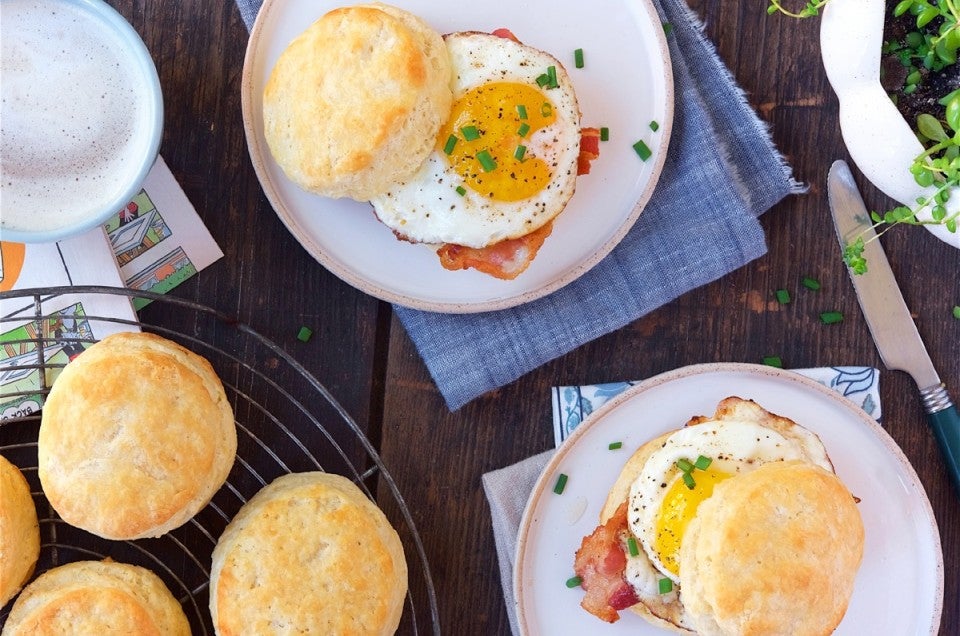


Biscuits are one of the quickest, easiest ways to get hot bread on the table fast. Sourdough bread, on the other hand, can take many hours or even days to move from inspiration to a crusty loaf. So what happens when you combine a straightforward biscuit recipe with sourdough starter? Sourdough for breakfast!
I was never a huge fan of sourdough baking. My starter used to sit in the fridge, gradually looking sadder and sadder, until I finally guilted myself into feeding it (during which I’d have to throw two-thirds of it away). That always bothered me, that discard — until quite recently, when I discovered sourdough waffles.
Since they use the starter you’d otherwise toss, these waffles are a salve to my thrifty (some might say cheap) boomer soul. And besides, they’re wonderfully tasty: crisp on the outside, tender within, and packed with tangy flavor.
I began to wonder — what else can I do with my discard starter?
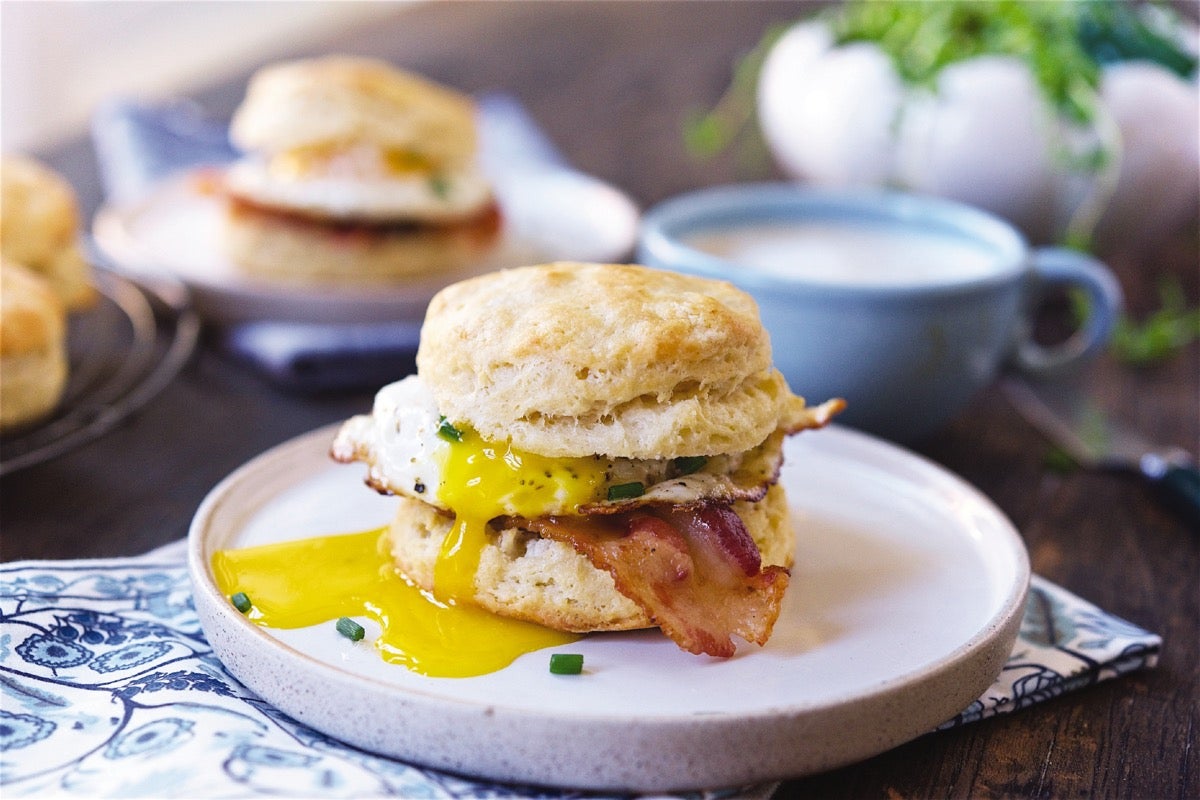
Enter Buttery Sourdough Sandwich Biscuits. Starting out as a typical biscuit (combining flour, salt, baking powder, and butter), these substitute discard starter for the usual liquid component (milk or buttermilk). The result? Tender biscuits with sourdough tang — and the satisfaction of feeding my starter without throwing anything away.
If you have a jar or crock of sourdough starter lurking in your fridge, half-forgotten and growing older by the day, vow to feed it and get it back to bubbly happiness soon. The apple on the stick? Hot biscuits, ready to stuff with bacon or ham and egg.
Sourdough for breakfast? Nothing could be finer!
1 cup (120g) King Arthur Unbleached All-Purpose Flour
2 teaspoons baking powder
3/4 teaspoon salt
1/2 cup (8 tablespoons, 113g) cold unsalted butter
1 cup (227g) sourdough starter,* unfed/discard
*Don't yet have a sourdough starter bubbling away in your kitchen or hiding in your fridge? Our fresh starter is a quick and easy way to get started in sourdough baking.
Preheat the oven to 425°F, with a rack in the upper third. Grease a baking sheet, or line it with parchment.
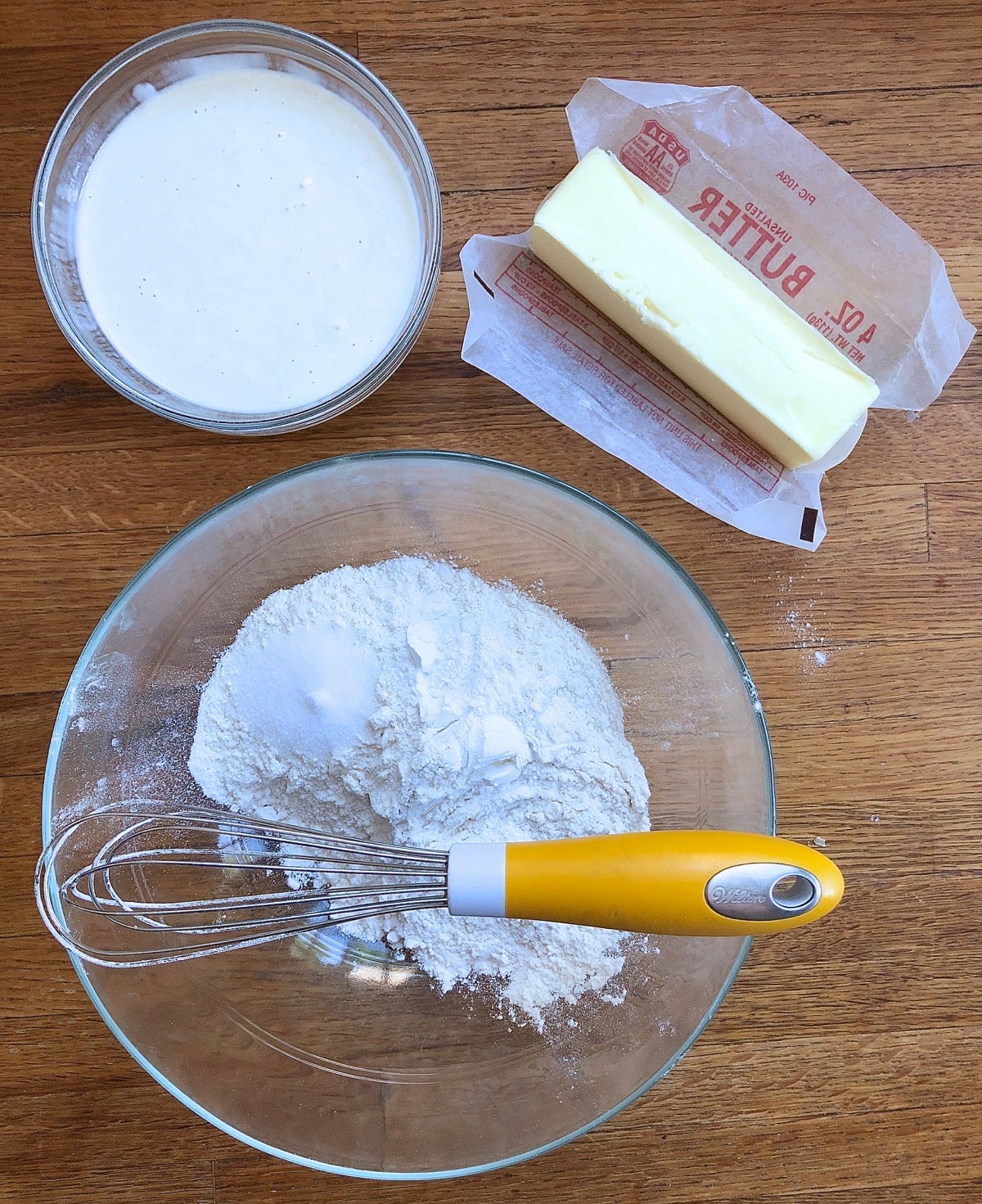
Place the flour, baking powder, and salt in a bowl. Whisk to combine.
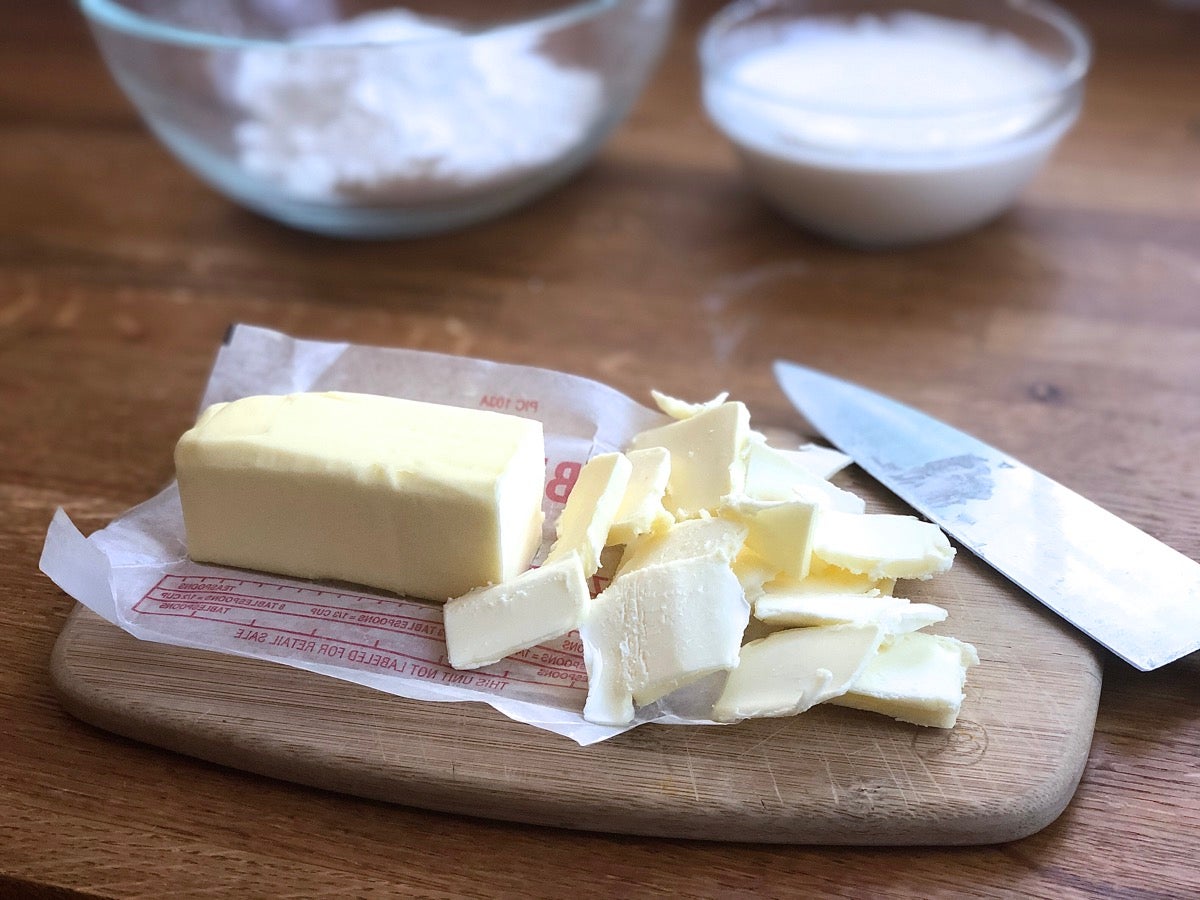
Slice the butter into thin pats; don't worry about any irregular shapes or variations in thickness.
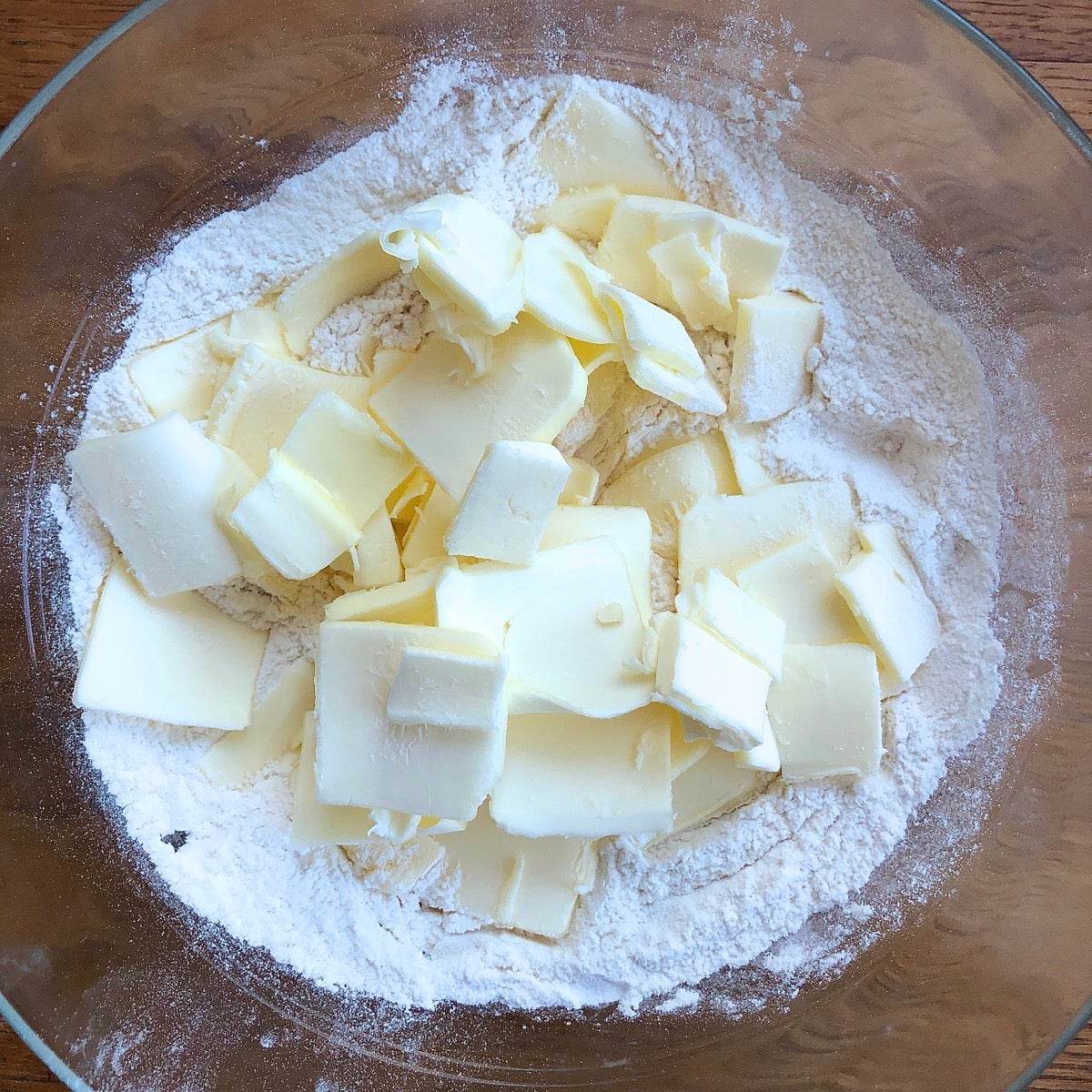
Place the butter into the bowl with the dry ingredients.
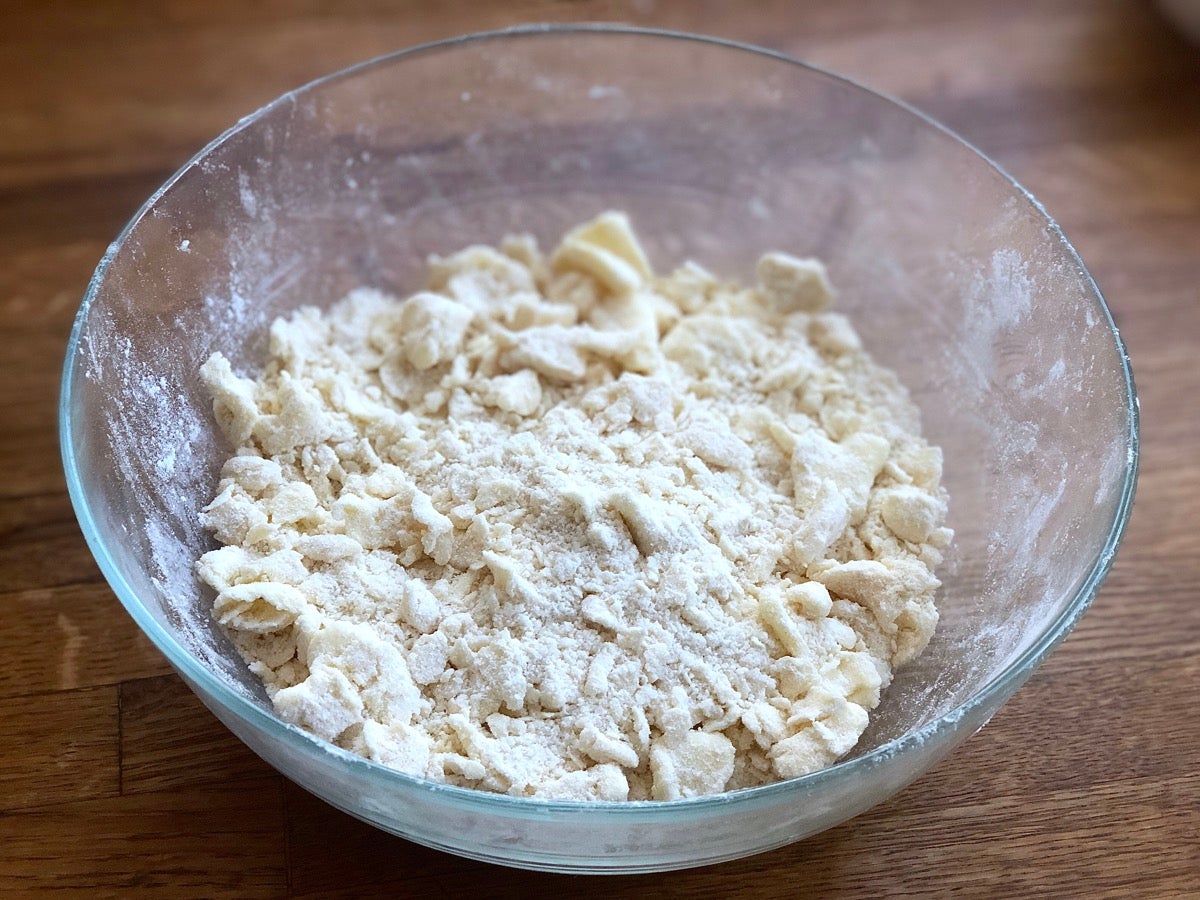
Using your fingers or a pastry blender, work the butter into the flour until the mixture is unevenly crumbly.
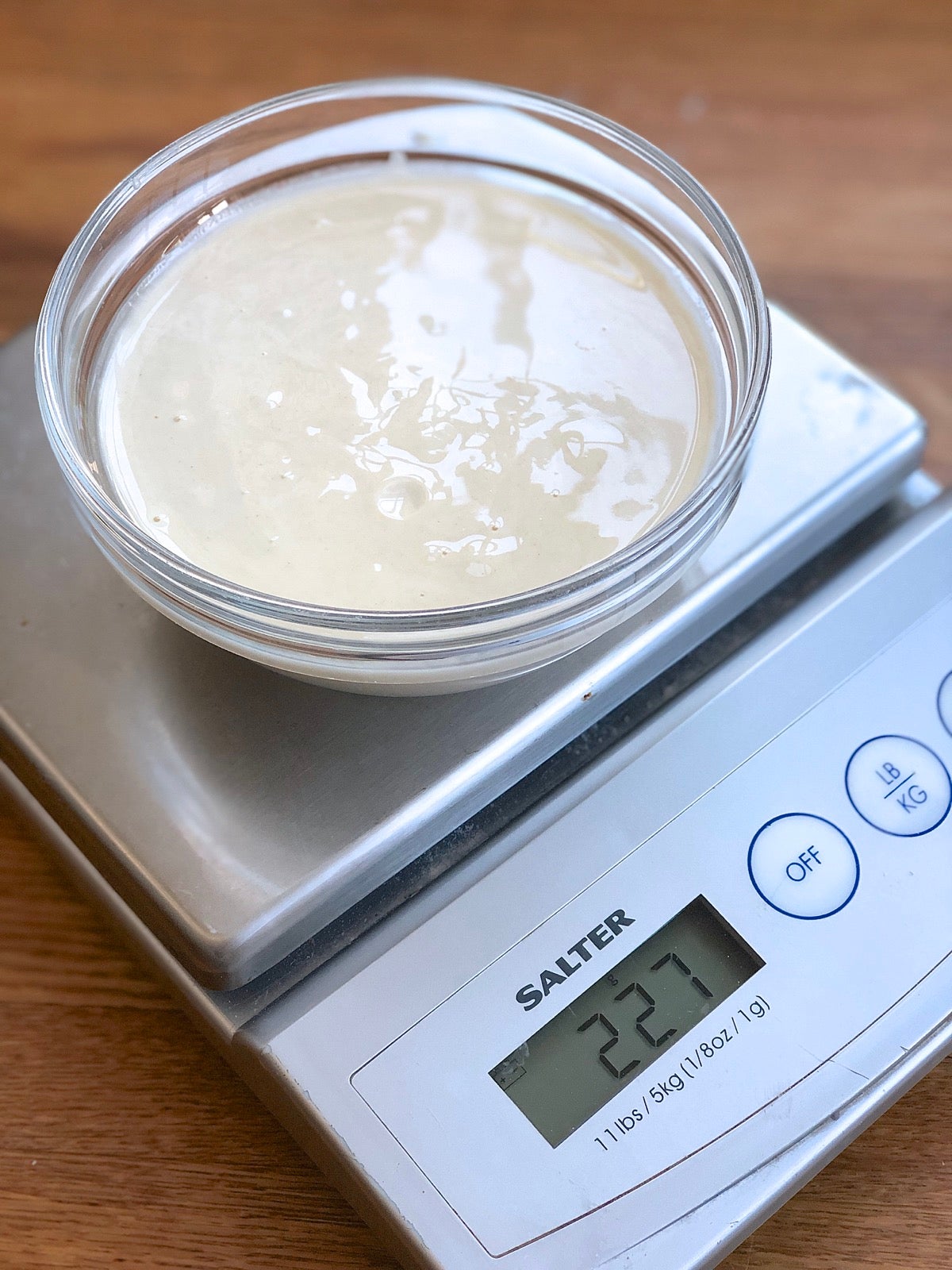
Stir down your unfed sourdough starter, and measure out 227g; this is your discard. Feed the remainder of the starter as usual; if you don't have your feeding down pat and need help, check out our sourdough baking guide.
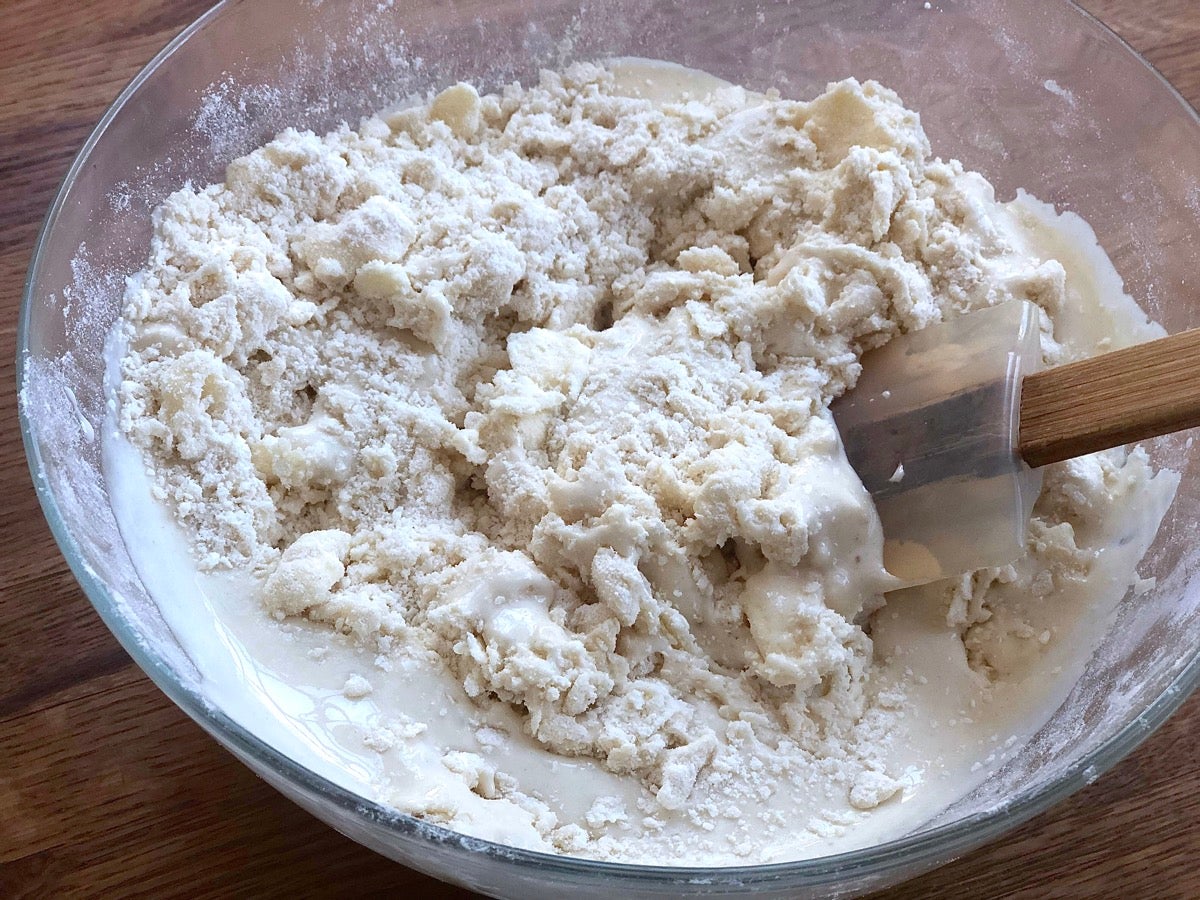
Add the discard starter to the flour/butter mixture, stirring gently until the dough is cohesive. Sourdough starters can vary in how liquid they are. If your biscuit dough seems very dry, dribble in a bit of milk or buttermilk until it comes together.
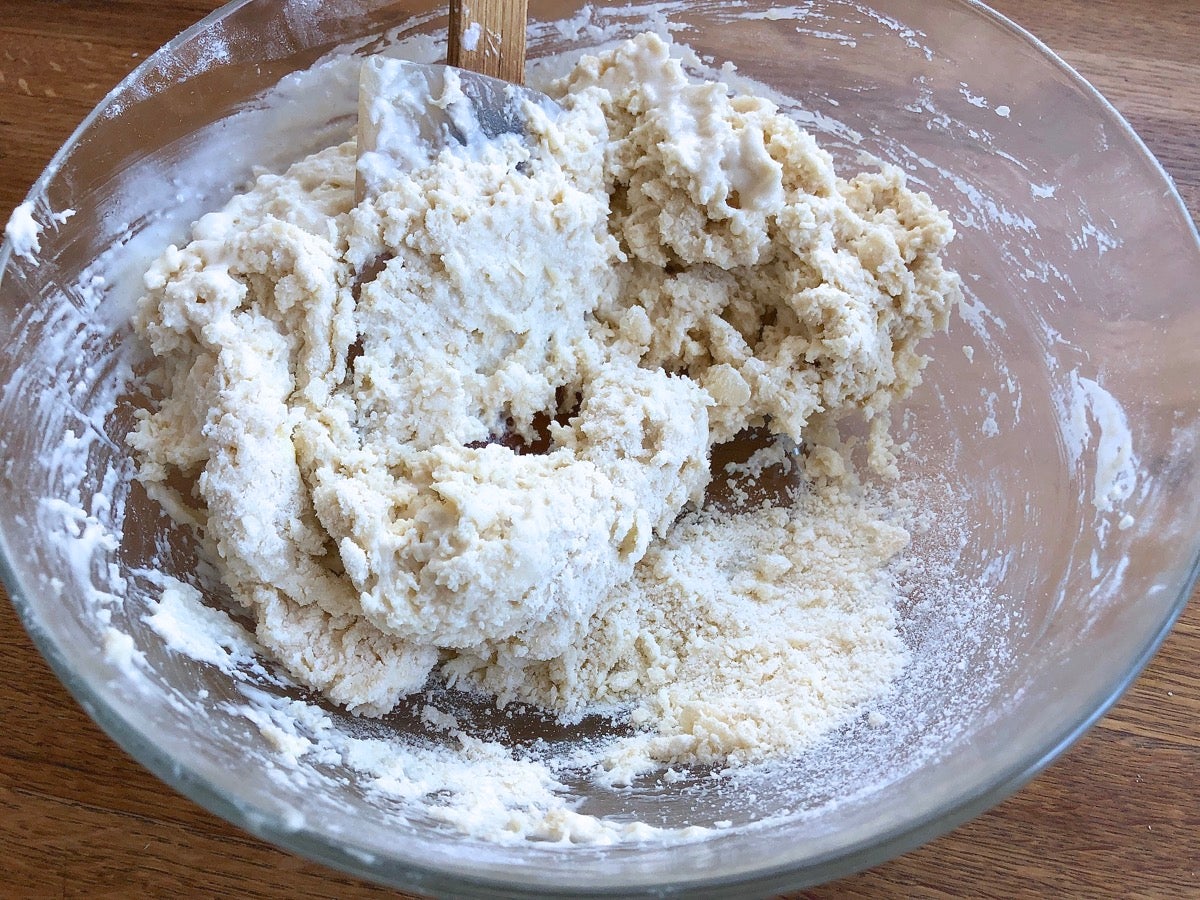
Be sure to incorporate all of the floury bits at the bottom.
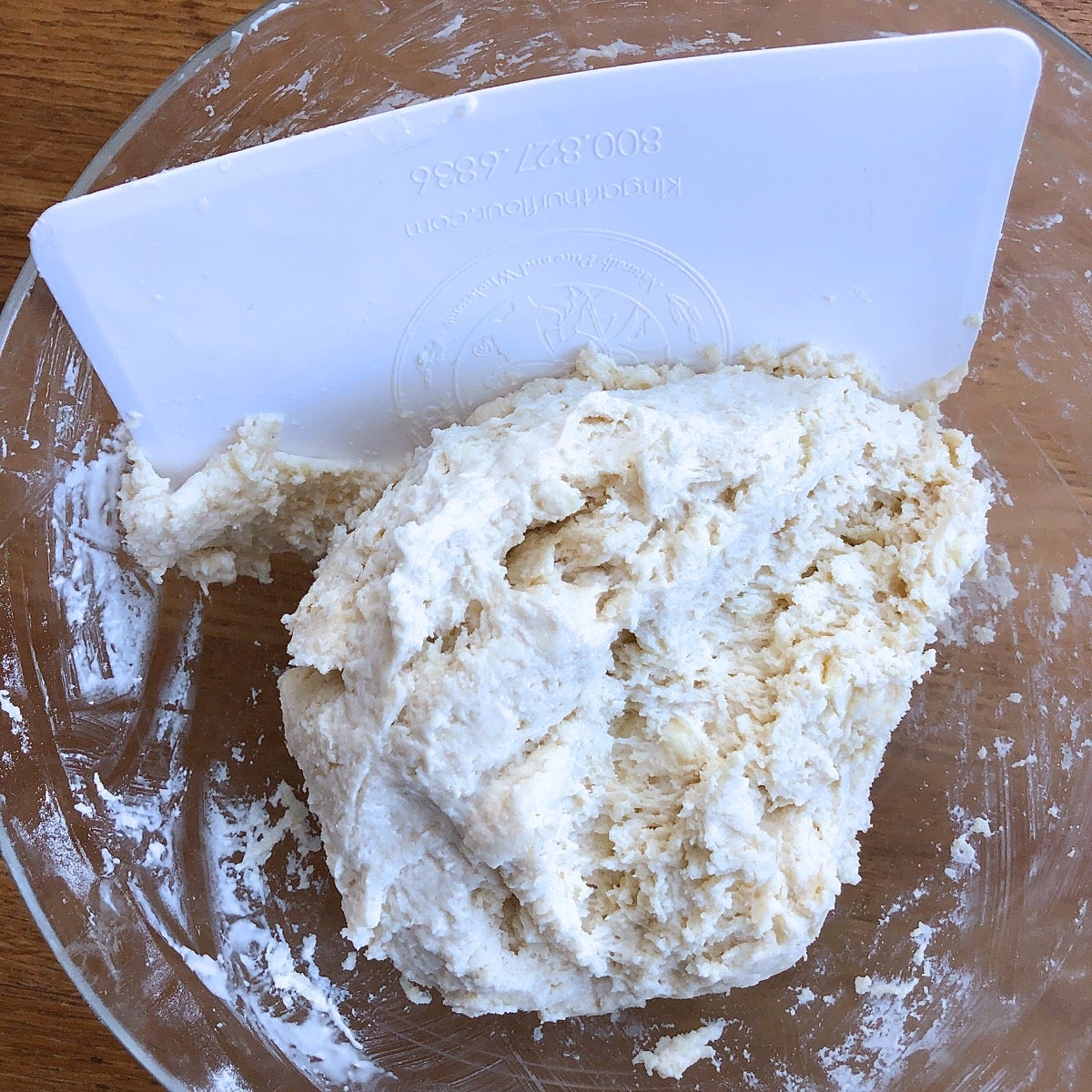
A bowl scraper works well here.

Turn the dough out onto a lightly floured work surface (or a piece of parchment), and gently pat it into 5 1/2" round; it'll be about 1" thick.
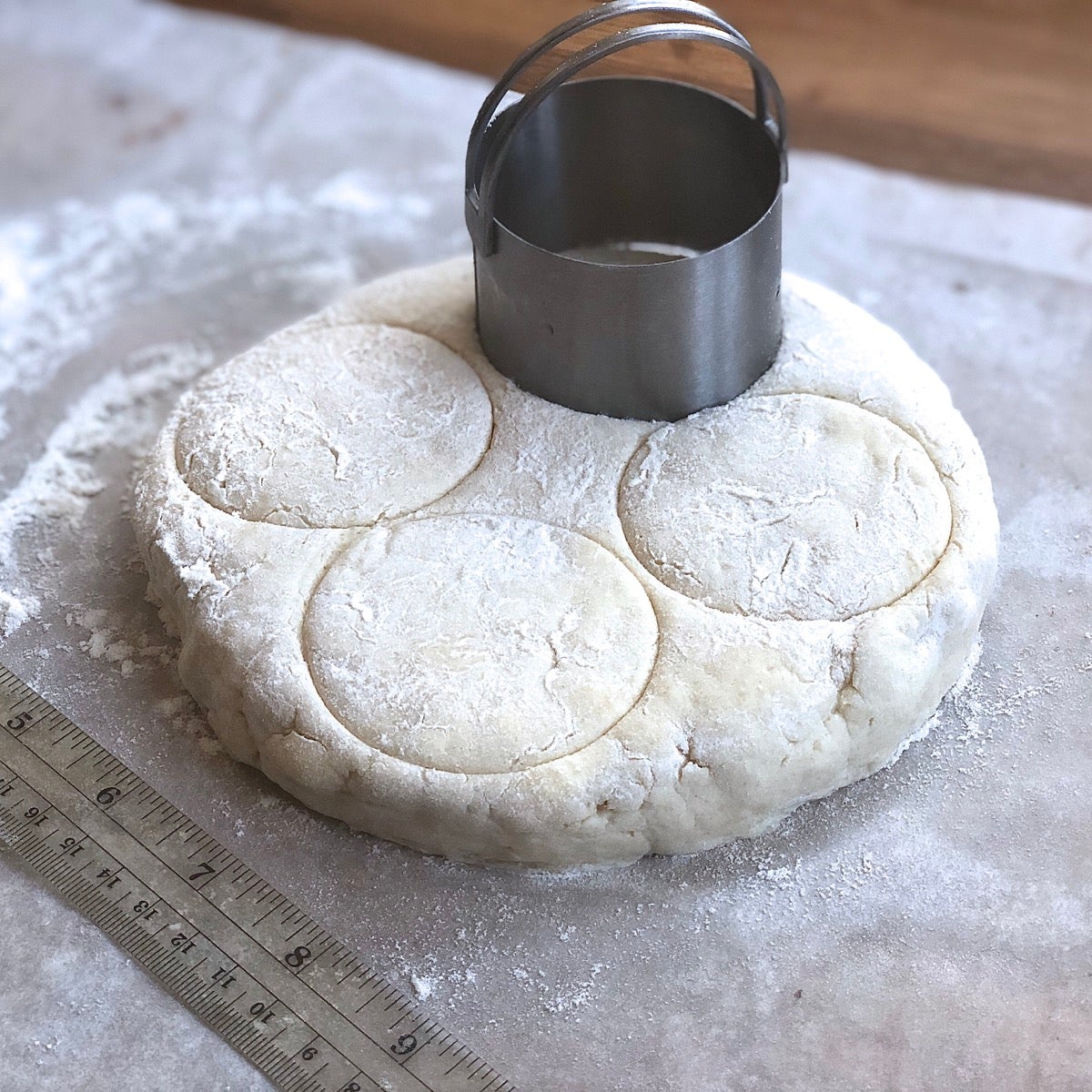
Use a 2 3/8" biscuit cutter to mark off four circles.
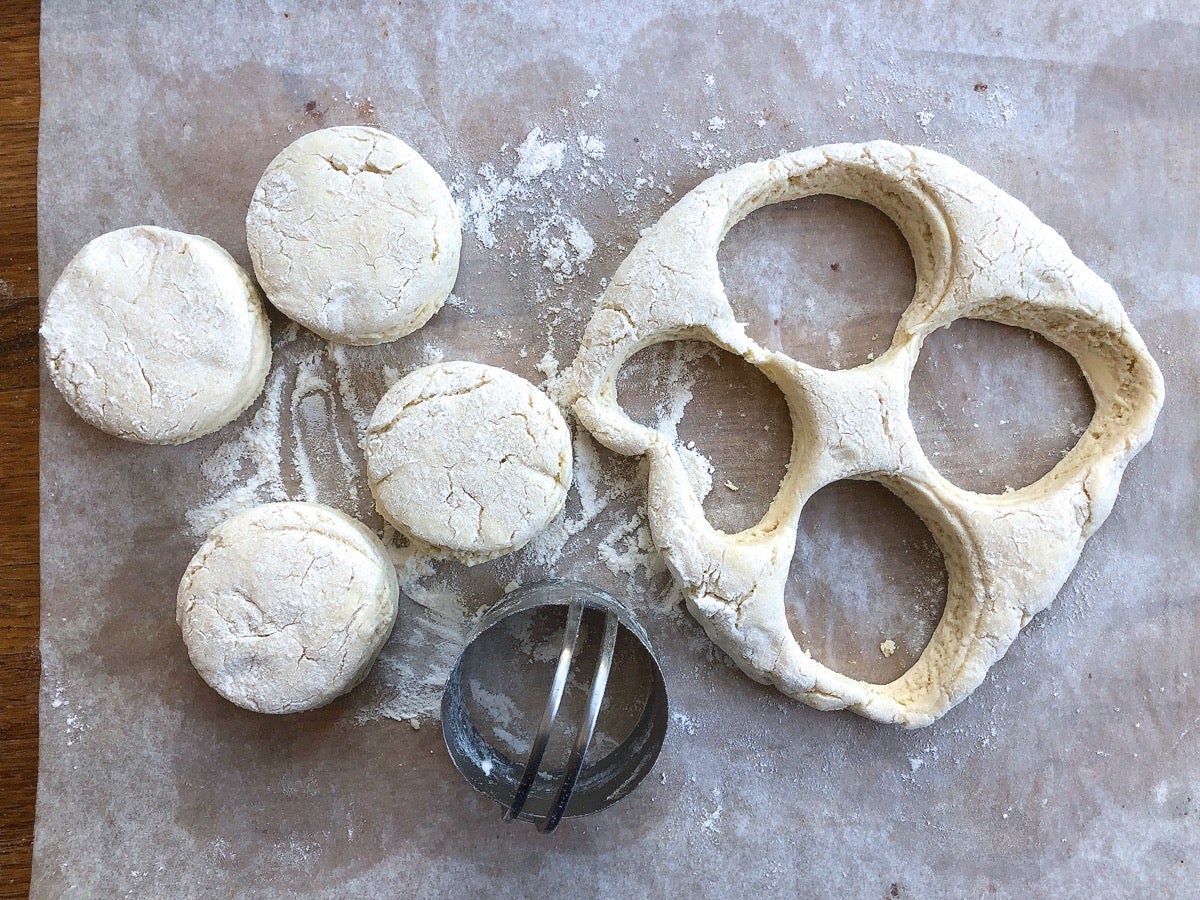
You should be able to cut them cleanly, without lapping over the edge of the round or bumping into any of the other biscuits.
Why is this important?
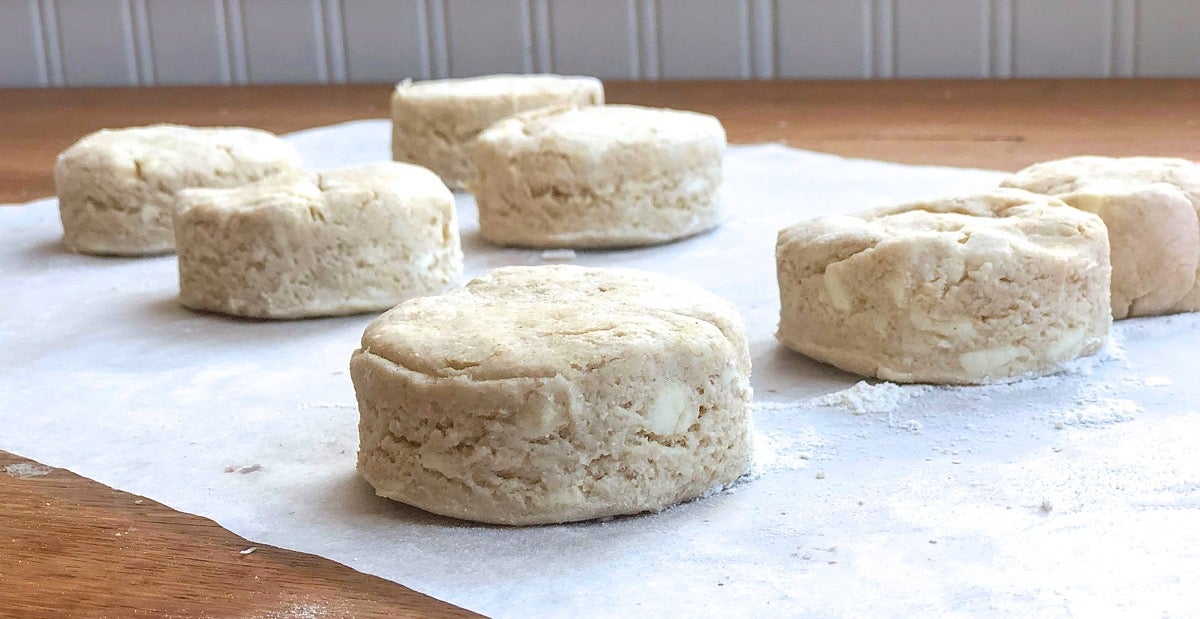
Because biscuits with cleanly cut edges (rather than smooshed-down edges) will rise higher. Want proof? See How to make high-rising biscuits.
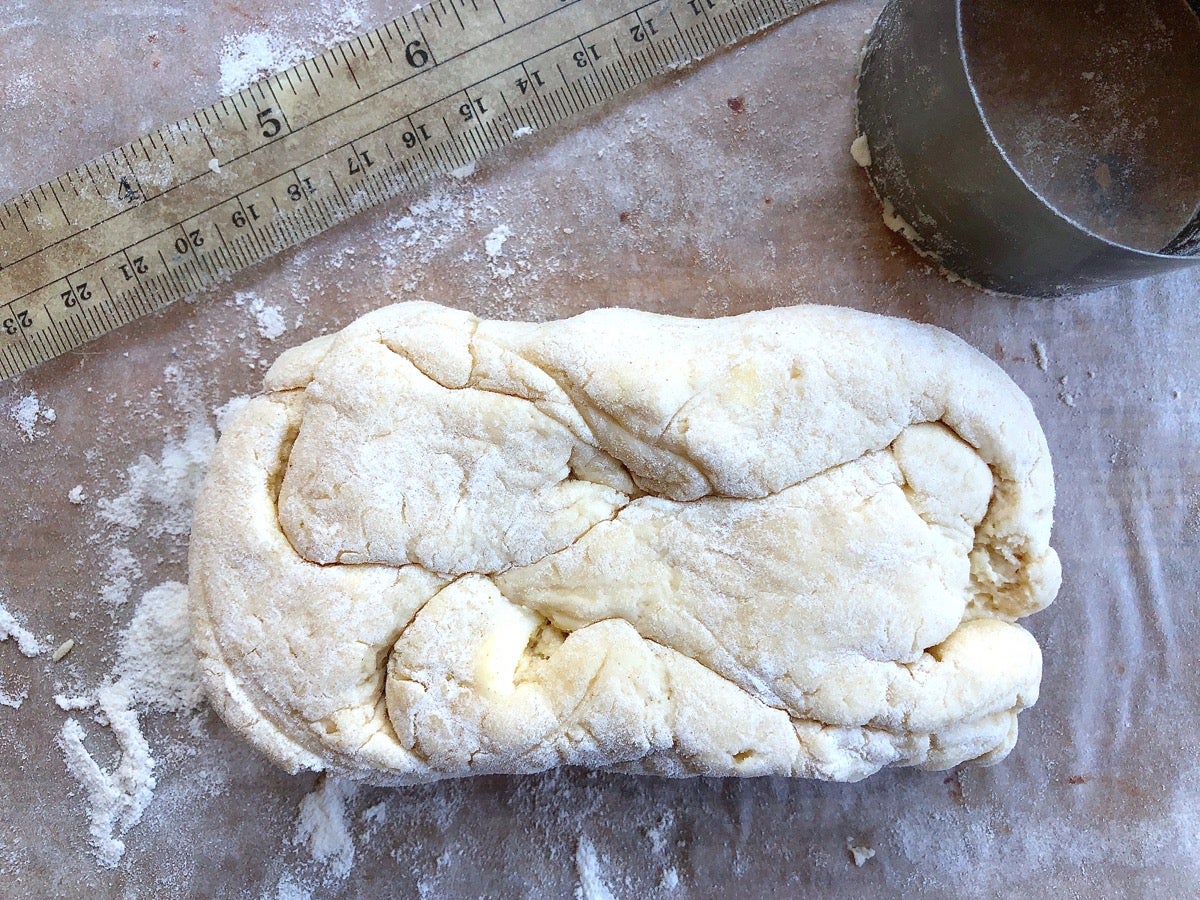
Gently push and pat the scraps into a 2 1/2" x 5 1/2" rectangle. Cut two more biscuits.
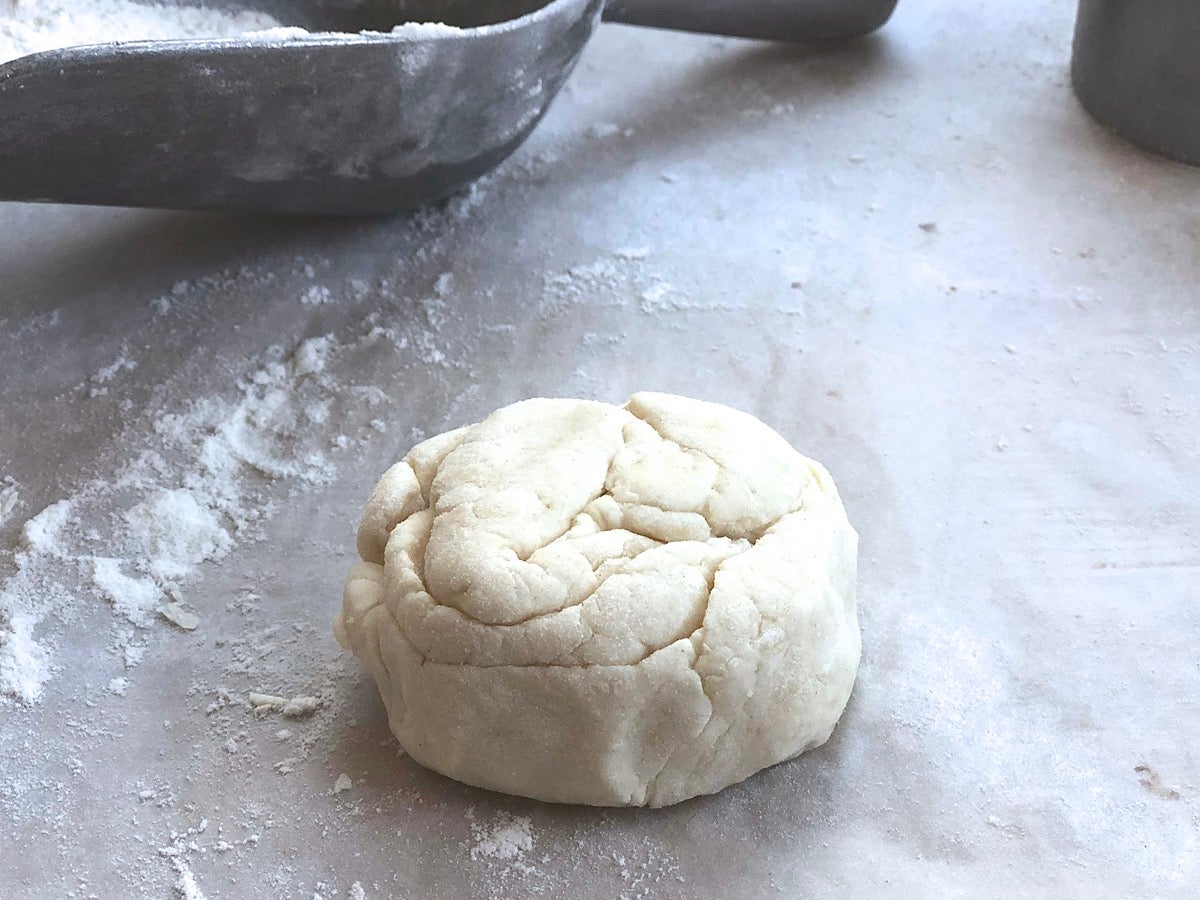
Push and pat the remaining scraps into a 1"-thick biscuit; it'll be slightly smaller than the others.
At no point should you knead or work the dough, which would make the biscuits tough. It's fine that their tops may be a bit gnarly-looking; we're trading appearance for good texture here.
Now, what if you don't have a 2 3/8" biscuit cutter? Feel free to make smaller or slightly larger biscuits; smaller ones will need a bit less time in the oven, larger a bit more.
And if you don't have any biscuit cutters at all? Simply roll the dough into a 5" x 7 1/2" rectangle and cut out six squares. Your square biscuits will be a bit larger than the round ones but hey, all good.
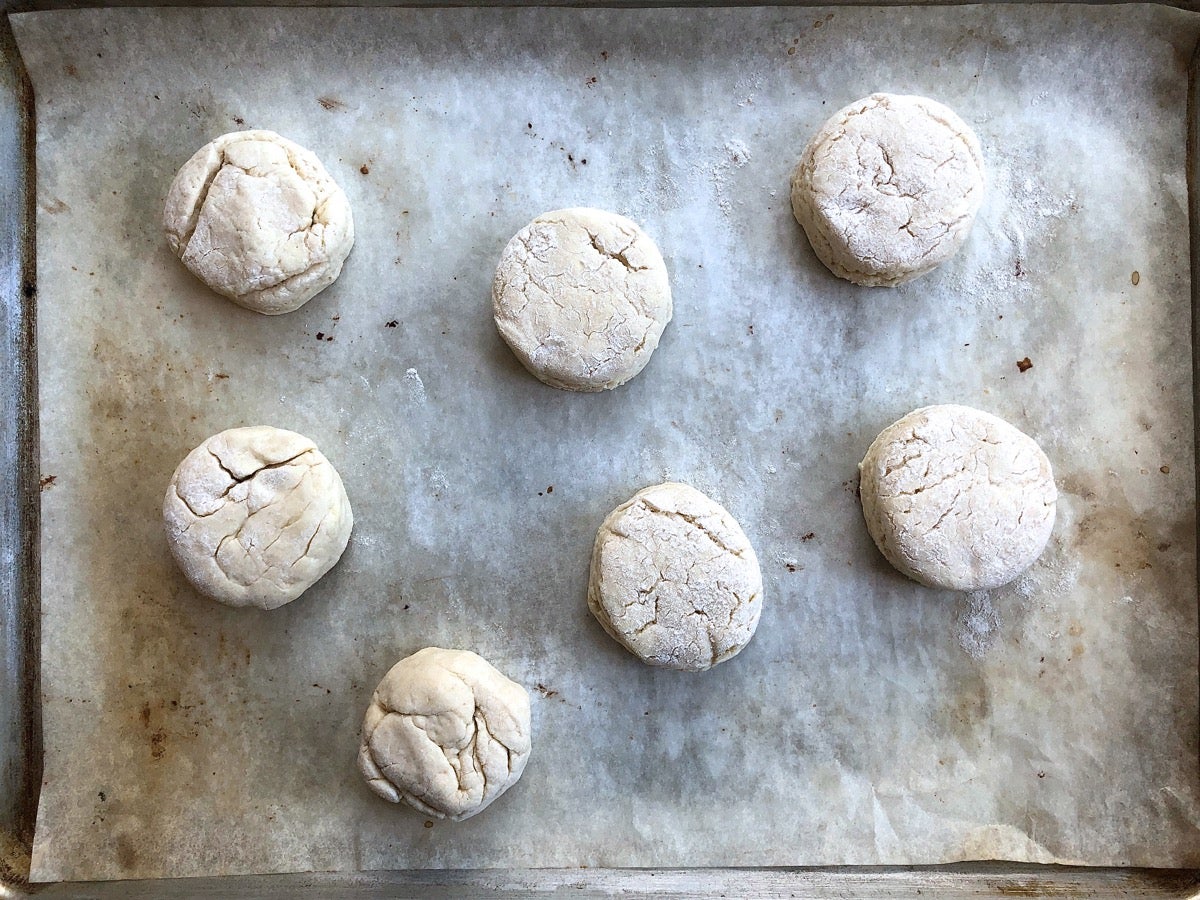
Place the biscuits onto the prepared baking sheet, leaving about 2" between them; they'll spread as they bake.
Notice how "well-loved" (read: much-used) this parchment paper is? I use parchment until it's falling to pieces (or until I bake something particularly sloppy on it). By simply brushing the crumbs off and wiping gently with a damp towel afterward, I'm able to get many bakes out of a single piece of parchment.
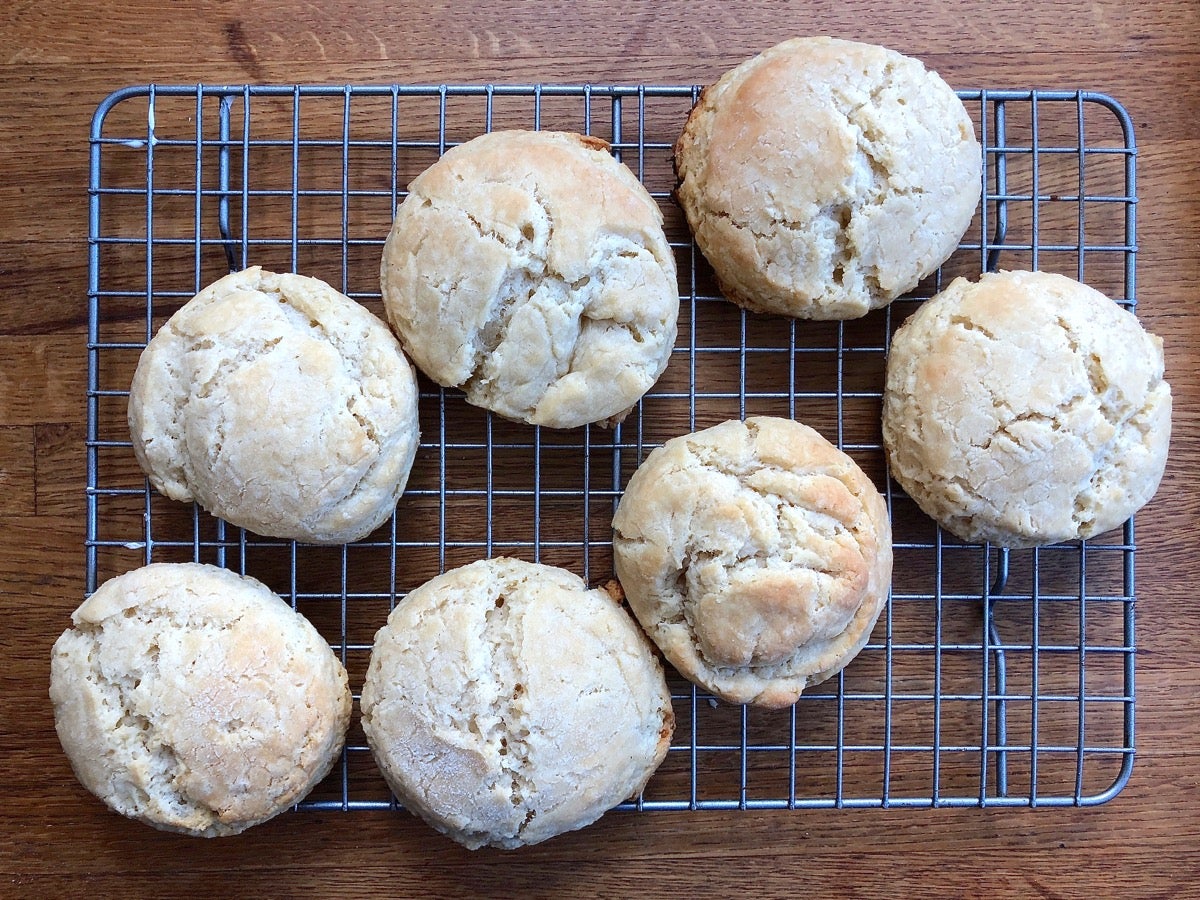
Bake the biscuits in the upper third of your oven for 20 to 23 minutes, until they're a very pale golden brown.
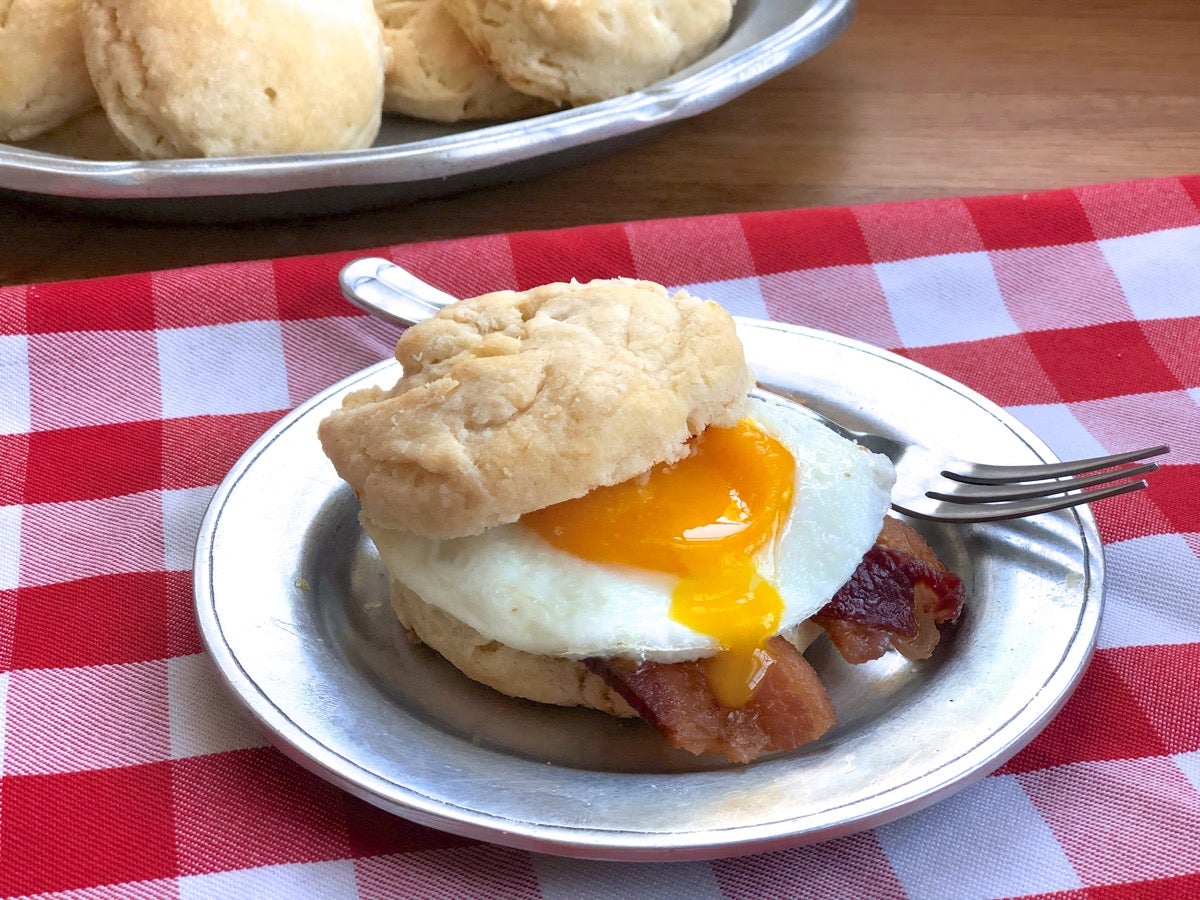
Remove the biscuits from the oven, and serve warm. As you can gather from the recipe title, these biscuits make yummy breakfast sandwiches.
Cool any leftovers completely, bundle in plastic or your favorite reusable wrap, and store at room temperature for several days. Freeze, well-wrapped, for longer storage.
Since warm biscuits are always preferable to cold ones, plan on rewarming biscuits before serving. Place them on a baking sheet, tent with foil, and heat until they're as warm as you like, typically about 8 to 10 minutes. Give frozen biscuits a few minutes longer.
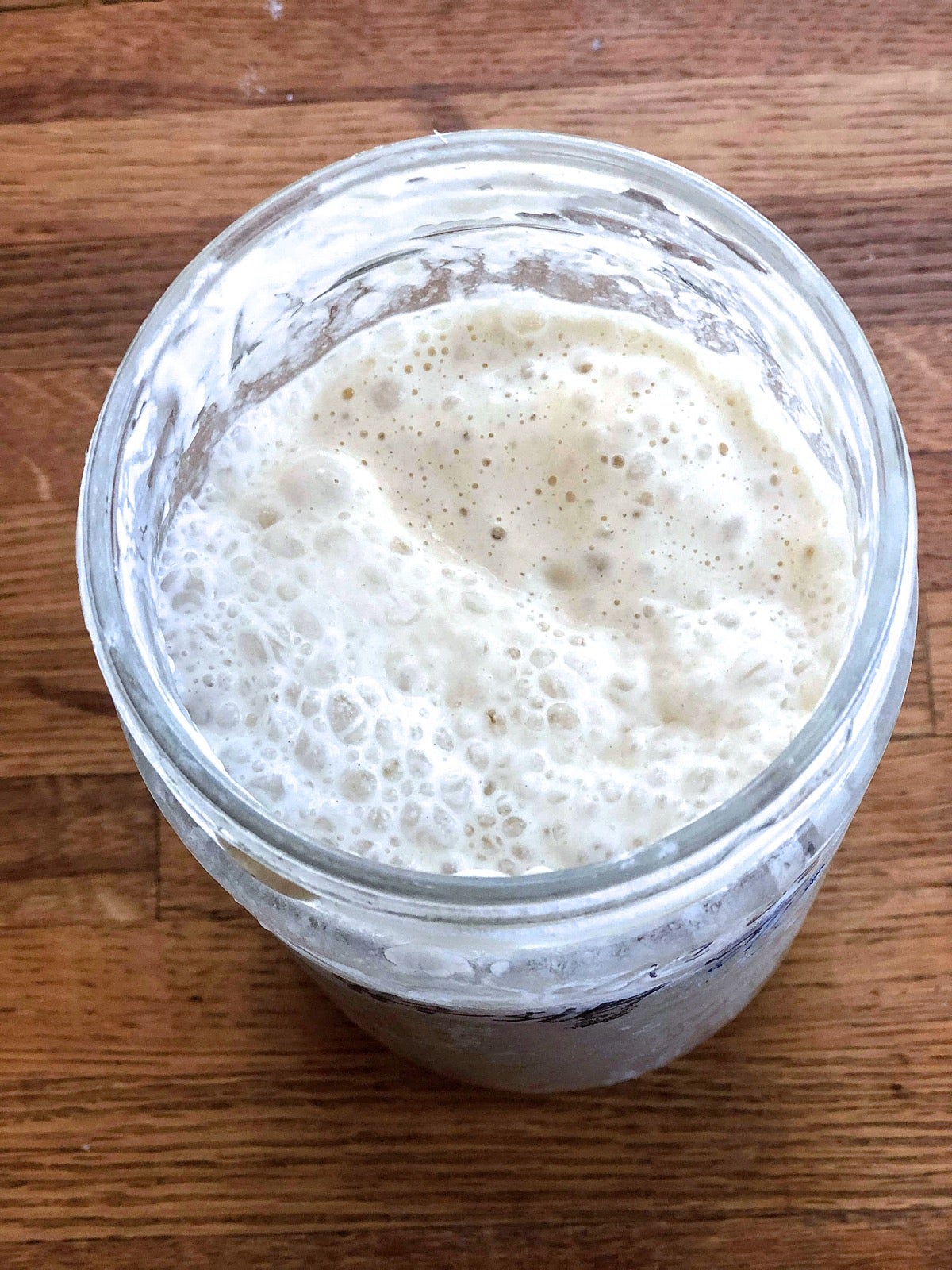
Q. What will happen if I make the biscuits with ripe starter instead of my discard?
A. Made with a ripe, vigorous starter, these biscuits will rise a bit higher and spread a tad less. But don't think you'll see a major change if you use fed starter; the difference is quite subtle, and your discard is definitely fine in this recipe.
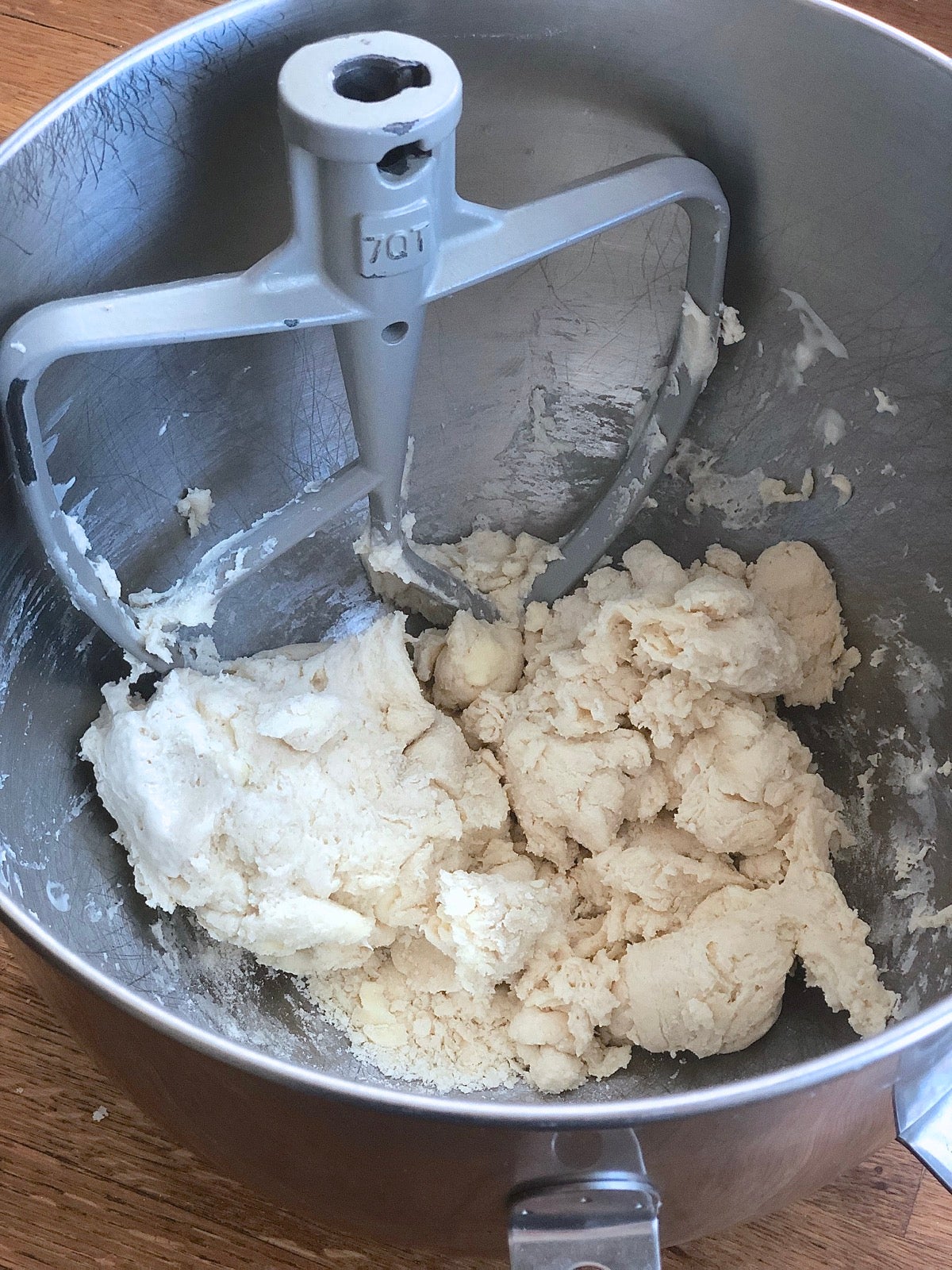
Q. Can I make these biscuits using my stand mixer?
A. Absolutely. Use your mixer to combine the dry ingredients, work in the butter, and mix in the starter. When it gets to this point (above), with a bit of dry flour still in the bottom of the bowl, turn the mixer off. Use a bowl scraper to incorporate the dry bits into the cohesive dough.
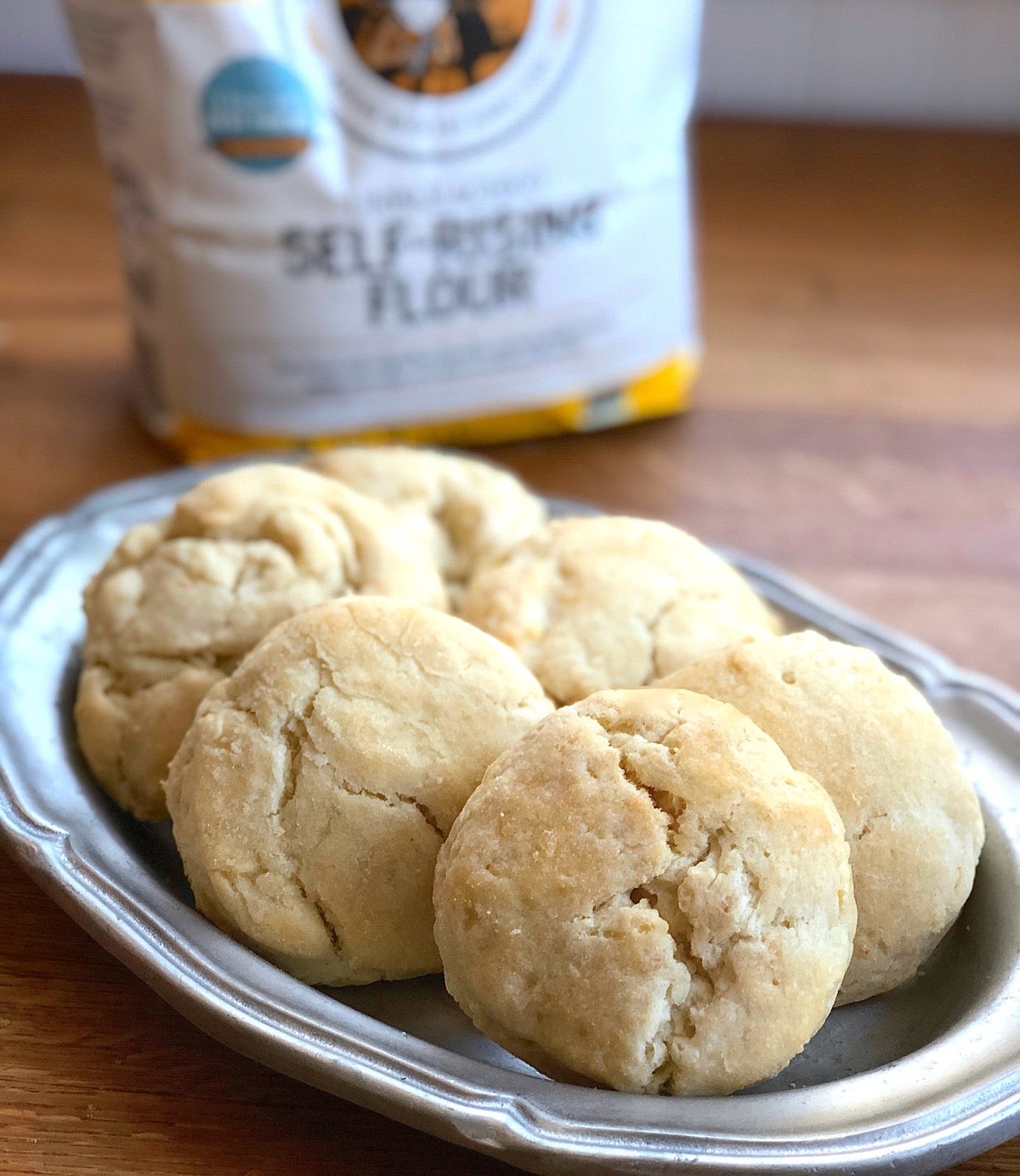
Q. I always use self-rising flour for my biscuits. Can I use it in this recipe, too?
A. Yes, self-rising flour will make extra-tender biscuits. Since self-rising is lower in protein than all-purpose flour, you'll want to cut back on the liquid in the recipe — which means reducing the starter to about 3/4 cup (170g), or enough to bring the dough together without making it too slack or sticky.
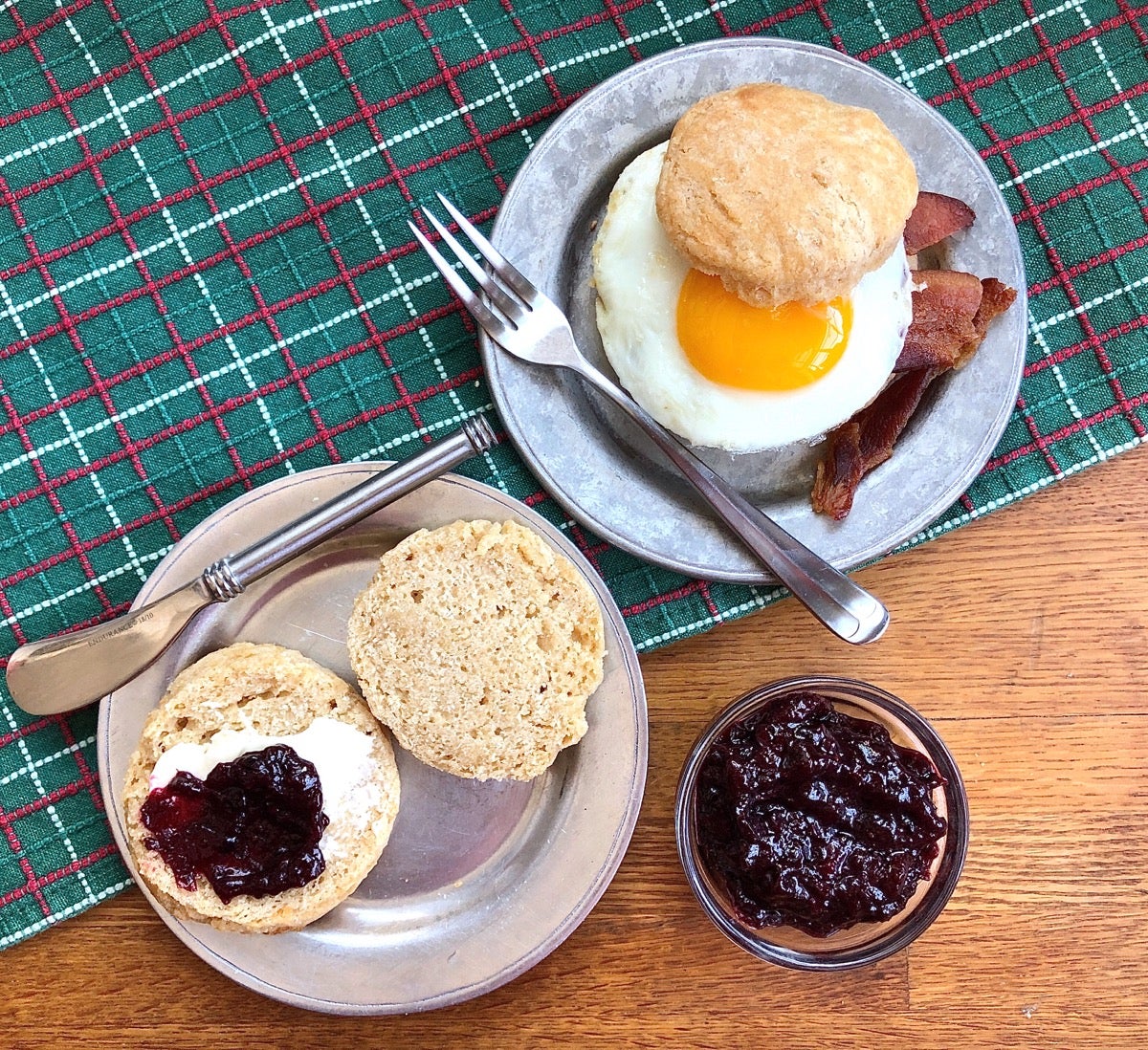
Q. I like to use whole wheat flour as often as I can. Is it good in this recipe?
A. Totally. Whether you maintain a white-flour starter or one based on whole grains, our golden whole wheat flour used in place of the all-purpose flour in this recipe makes a lovely, tender biscuit. While darker in color, these whole wheat biscuits give up very little in the flavor and texture department; you'll love them if you enjoy a slightly heartier biscuit.
Q. Can I make these biscuits gluten-free?
A. We haven't tried that, but we do offer a recipe for Gluten-Free Sourdough Starter if you want to give it a go. Once your starter is established and you're ready to bake, substitute our Measure for Measure Flour for the all-purpose flour in the biscuit recipe.
One final note: If you really and truly can't seem to remember to feed your starter but also don't want to let it die, here's a solution: put your sourdough starter on hold by drying it out. Revive it when you're ready for these biscuits!

